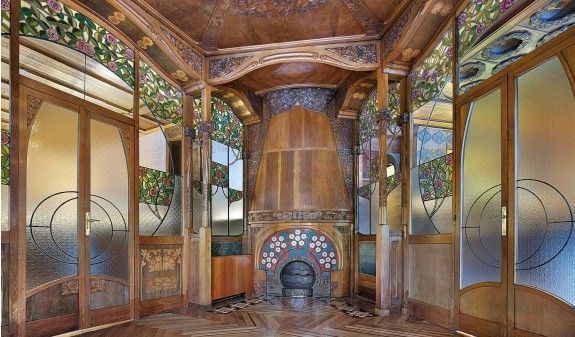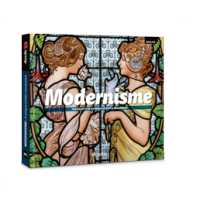Barcelona
The capital of the Mediterranean
RETURN
About the book Barcelona
A melting pot of great artists, architects and intellectuals, Barcelona is a cosmopolitan and open metropolis that enjoys international prestige. From its founding in Roman times, the city has been at the heart of numerous events and cultural movements, which have contributed to providing it with its unique and constantly evolving dynamic character.
Closely linked to the sea, Barcelona has stood out over the years for elevating and propagating Mediterranean culture, a feature that has allowed it to attract millions of visitors and establish itself as one of the most important capitals of the south of Europe.
This book on Barcelona, published by Dosde, covers the long history of the city and shows its most emblematic monuments, which make up a varied and iconographic cultural heritage admired throughout the world for its originality and its great artistic value.
Closely linked to the sea, Barcelona has stood out over the years for elevating and propagating Mediterranean culture, a feature that has allowed it to attract millions of visitors and establish itself as one of the most important capitals of the south of Europe.
This book on Barcelona, published by Dosde, covers the long history of the city and shows its most emblematic monuments, which make up a varied and iconographic cultural heritage admired throughout the world for its originality and its great artistic value.
Visual Edition
Barcelona
It includes exclusive digital content
Multilanguage: Available in 8 languages
Made with environmentally friendly paper
"Premio Anuaria" Best Editorial Design category
About the book Barcelona
A melting pot of great artists, architects and intellectuals, Barcelona is a cosmopolitan and open metropolis that enjoys international prestige. From its founding in Roman times, the city has been at the heart of numerous events and cultural movements, which have contributed to providing it with its unique and constantly evolving dynamic character.
Closely linked to the sea, Barcelona has stood out over the years for elevating and propagating Mediterranean culture, a feature that has allowed it to attract millions of visitors and establish itself as one of the most important capitals of the south of Europe.
This book on Barcelona, published by Dosde, covers the long history of the city and shows its most emblematic monuments, which make up a varied and iconographic cultural heritage admired throughout the world for its originality and its great artistic value.
Closely linked to the sea, Barcelona has stood out over the years for elevating and propagating Mediterranean culture, a feature that has allowed it to attract millions of visitors and establish itself as one of the most important capitals of the south of Europe.
This book on Barcelona, published by Dosde, covers the long history of the city and shows its most emblematic monuments, which make up a varied and iconographic cultural heritage admired throughout the world for its originality and its great artistic value.
Videos Barcelona
Readers opinions
(5)
RETURN
Reviews
(5)
Great pictures and content. It is a high quality book!
The book looks good to me, it was worth purchasing.
Out of the books that were available when I viewed them whilst in Spain, yours fit my needs the most
Your books are very nice, all I can suggest is that you create new ones all the time, choosing the best images and content as you have been doing so far.
A book with excellent photos and content. It was worth purchasing.
Readers opinions
(5)
Great pictures and content. It is a high quality book!
The book looks good to me, it was worth purchasing.
Additional Information
- Additional Information
- Subtitle: The capital of the Mediterranean
- Weight (g): 550
- Binding: Paperback with flaps
- Size (cm): 17,5 x 19,5
- Author: Dosde
- Pages: 0
- Edition: Visual Edition
What to see in Barcelona
The origin of Barcelona dates back to the year 10 BC, when Roman Emperor Octavius Augustus founded the colony of Barcino on Mons Táber, that became a strategic enclave owing to its excellent maritime and overland connections. In the Middle Ages the city became the capital of the Crown of Aragon and its strong economic growth was reflected in the construction of numerous civil and religious buildings.
The history of Barcelona has forever been linked to great artistic and cultural movements, which have transformed it into a dynamic and cosmopolitan metropolis. The great artistic and architectonic heritage of the city is a magnet for its visitors, making it a reference point for tourism in Spain.
We can also find other buildings that are key in Catalan politics, such as the Palau de la Generalitat, headquarters of the Catalan government, built between the 15th and 17th centuries. Opposite it, the headquarters of the City Council of Barcelona is comprised of spaces of great architectonic value.
The historical centre of Barcelona is also of great cultural interest, as it is also home to the Picasso Museum as well as the Born Market, a space reconverted into a cultural centre.
The dividing line between the Gothic Quarter and Raval, the street that links Plaça de Catalunya with the seafront, went from being a transition space to one of the city's most emblematic thoroughfares thanks to its sheer vitality. Located in the centre of the city, la Rambla connects places such as the Boquería Market and the Gran Teatro del Liceo, finishing finally at the Port of Barcelona.
As for the Eixample neighbourhood, it is home to some of the best examples of Modernist architecture, a movement whose works turned Barcelona into one of the world capitals of architecture. Casa Batlló, Casa Amatller, La Pedrera or Casa Sayrach are some of the emblematic buildings that demonstrate the importance of Catalan Modernism, with the architect Antoni Gaudí as one of its maximum exponents.
Thanks to the celebration of the Olympic Games of 1992, Barcelona was able to undertake the most important renovation project since the demolition of its medieval walls and the creation of the Eixample.
With the objective of maintaining its brand position, the city continues to transform itself, developing plans such as the 22@ zone, which transformed an obsolete industrial neighbourhood into a technological district. These changes have not only updated the profile of the city, but have meant that Barcelona is connected to the artistic vanguard by means of innovative projects signed by the most prestigious of big-name architects.
The Torre Agbar, the Fórum building, the Edificio Disseny Hub or the Torre Marenostrum are just a few of the works that Barcelona has incorporated in its new urban space, buildings with a clearly defined sculptural design that have been devised to convert into the city's new signs of identity.
The history of Barcelona has forever been linked to great artistic and cultural movements, which have transformed it into a dynamic and cosmopolitan metropolis. The great artistic and architectonic heritage of the city is a magnet for its visitors, making it a reference point for tourism in Spain.
The old quarter of Barcelona
Traces of the past are visible in the historic centre, the cultural, political and religious heart of city. The Cathedral of Barcelona, the Plaza del Rey, the Calle del Bisbe and Plaza de Sant Jaume are some of the emblematic places in this zone where the most important religious buildings of the city are concentrated.We can also find other buildings that are key in Catalan politics, such as the Palau de la Generalitat, headquarters of the Catalan government, built between the 15th and 17th centuries. Opposite it, the headquarters of the City Council of Barcelona is comprised of spaces of great architectonic value.
The historical centre of Barcelona is also of great cultural interest, as it is also home to the Picasso Museum as well as the Born Market, a space reconverted into a cultural centre.
The Rambla and the Ensanche
The dividing line between the Gothic Quarter and Raval, the street that links Plaça de Catalunya with the seafront, went from being a transition space to one of the city's most emblematic thoroughfares thanks to its sheer vitality. Located in the centre of the city, la Rambla connects places such as the Boquería Market and the Gran Teatro del Liceo, finishing finally at the Port of Barcelona.As for the Eixample neighbourhood, it is home to some of the best examples of Modernist architecture, a movement whose works turned Barcelona into one of the world capitals of architecture. Casa Batlló, Casa Amatller, La Pedrera or Casa Sayrach are some of the emblematic buildings that demonstrate the importance of Catalan Modernism, with the architect Antoni Gaudí as one of its maximum exponents.
The new Barcelona
Thanks to the celebration of the Olympic Games of 1992, Barcelona was able to undertake the most important renovation project since the demolition of its medieval walls and the creation of the Eixample.With the objective of maintaining its brand position, the city continues to transform itself, developing plans such as the 22@ zone, which transformed an obsolete industrial neighbourhood into a technological district. These changes have not only updated the profile of the city, but have meant that Barcelona is connected to the artistic vanguard by means of innovative projects signed by the most prestigious of big-name architects.
The Torre Agbar, the Fórum building, the Edificio Disseny Hub or the Torre Marenostrum are just a few of the works that Barcelona has incorporated in its new urban space, buildings with a clearly defined sculptural design that have been devised to convert into the city's new signs of identity.

























